Americans Not Buying Into the Government’s Electric Vehicle Revolution
'Mr. President, it is time to tap the brakes on the unrealistic government electric vehicle mandate,' stated 3,882 car dealers.
Recently, this rejection has come in the form of a reluctance to buy electric vehicles (EVs) despite numerous government subsidies and mandates, and in the form of towns and counties prohibiting wind and solar projects in their communities.
Automotive dealers, staring at swelling inventories of unsold EVs on their lots, joined together to petition President Joe Biden to drop the mandates that are part of his plan to force America’s cars and trucks onto the electric grid.
Car Buyers Skeptical About EVs
But despite numerous federal incentives and subsidies for EV buyers, as well as looming blue-state bans on the sale of gasoline-powered cars and trucks, many consumers remain unwilling to take the bait.“The adoption of EVs is not there, and the only reason this is happening is government mandates,” a Tennessee car dealer who spoke anonymously told The Epoch Times. “There are 50 reasons not to buy an EV and only one to produce EVs. That’s pretty bad odds, wouldn’t you agree?”
“Truck buyers are especially put off by the dramatic loss of range when towing,” the dealers wrote. “Today’s current technology is not adequate to support the needs of the majority of our consumers.
“With each passing day, it becomes more apparent that this attempted electric vehicle mandate is unrealistic, based on current and forecasted customer demand,” the dealers stated. “Already, electric vehicles are stacking up on our lots, which is our best indicator of customer demand in the marketplace.”
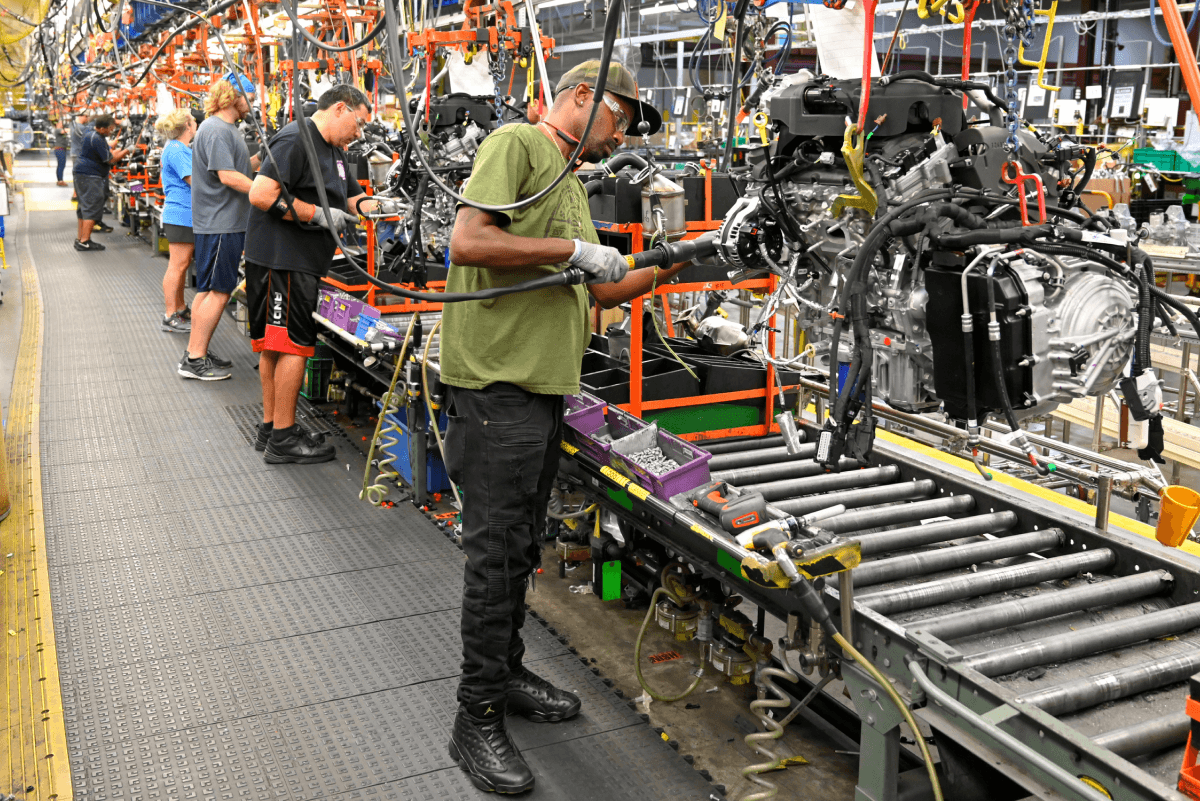
The top 5 most reliable brands were Lexus, Toyota (which owns Lexus), Mini (owned by BMW), Acura, and Honda (which owns Acura). While these carmakers also manufacture EVs, Toyota has stood out among its peers as an EV skeptic, saying that consumers should choose what technology they want, and the company has focused on hybrids for those who prioritize reducing CO2 emissions.
 New cars are showcased in the window of a dealership in New York City on Oct. 5, 2021. (Spencer Platt/Getty Images)
New cars are showcased in the window of a dealership in New York City on Oct. 5, 2021. (Spencer Platt/Getty Images)Central Planning for Net-Zero
Despite this, the Biden administration continues to expand its national industrial policy to transition Americans from gasoline cars to EVs. This policy features tough new limits on CO2 tailpipe emissions for carmakers, set by the Environmental Protection Agency, to force about two-thirds of new car and truck fleets to be zero-emission by 2032.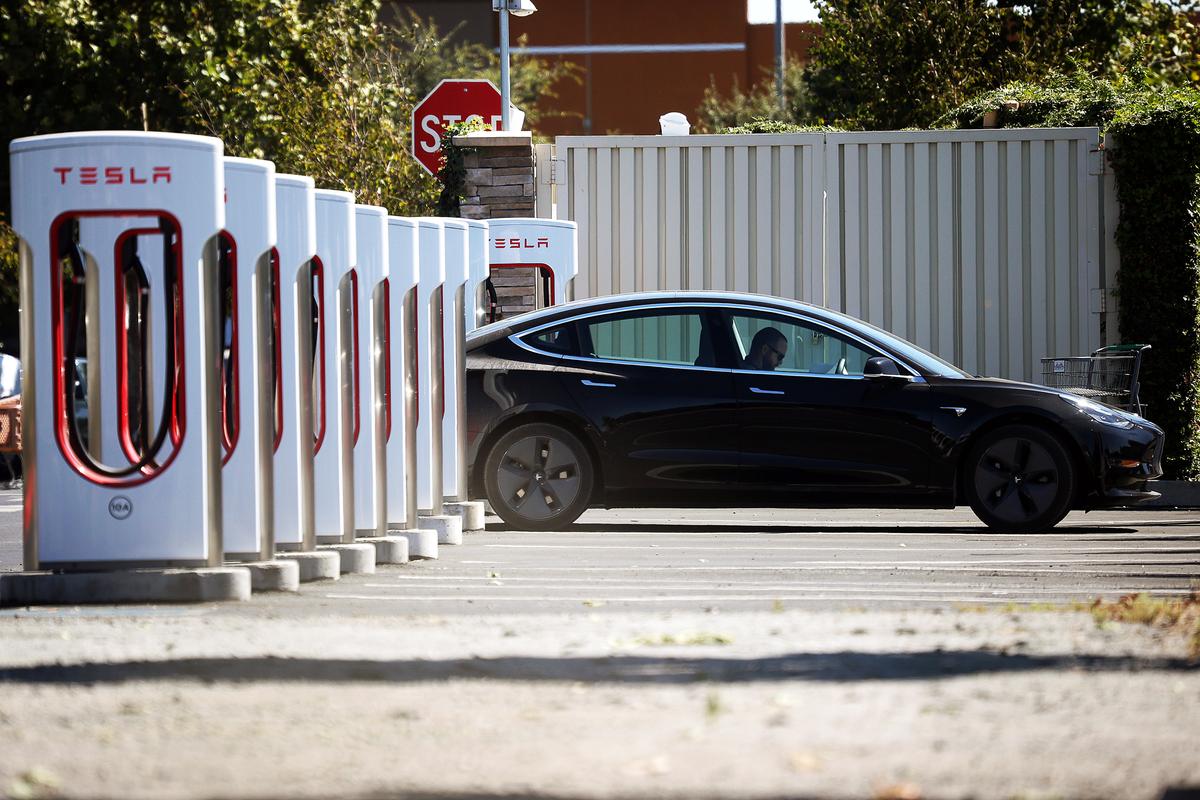 A Tesla sits parked at a Tesla Supercharger in Petaluma, Calif., on Sept. 23, 2020. California Gov. Gavin Newsom signed an executive order banning sales of internal combustion engines in the state after 2035. (Justin Sullivan/Getty Images)
A Tesla sits parked at a Tesla Supercharger in Petaluma, Calif., on Sept. 23, 2020. California Gov. Gavin Newsom signed an executive order banning sales of internal combustion engines in the state after 2035. (Justin Sullivan/Getty Images)“We are on track to achieve President Biden’s visionary goal of 500,000 public chargers and we will keep going even further by harnessing private investment to meet the nation’s EV charging needs identified in the study,” the White House stated. “This shows how effectively the Biden-Harris Administration has catalyzed private investment in a race to line our highways and roads with public chargers.”
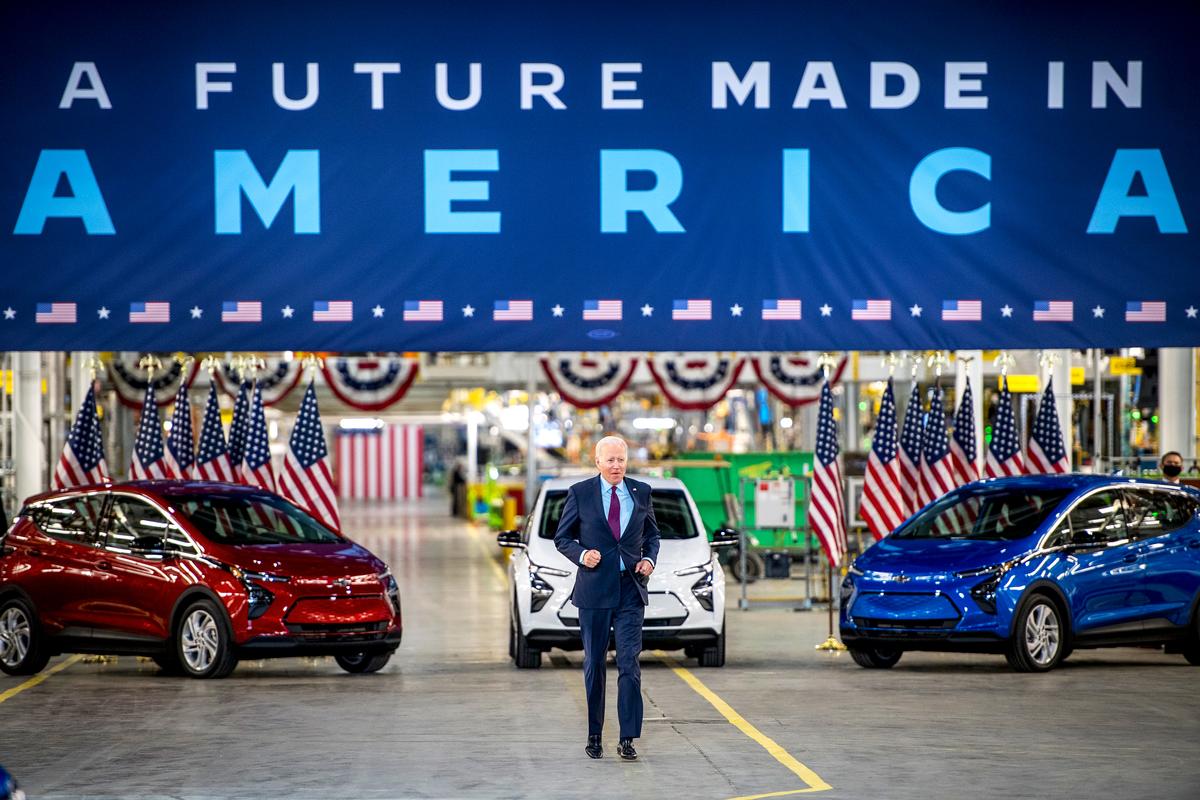 President Joe Biden arrives at the General Motors Factory ZERO electric vehicle assembly plant in Detroit, Mich., on Nov/ 17, 2021. Biden's infrastructure bill allocates $1 trillion for, among other things, adding electric vehicle charging stations around the country. (Nic Antaya/Getty Images)
President Joe Biden arrives at the General Motors Factory ZERO electric vehicle assembly plant in Detroit, Mich., on Nov/ 17, 2021. Biden's infrastructure bill allocates $1 trillion for, among other things, adding electric vehicle charging stations around the country. (Nic Antaya/Getty Images)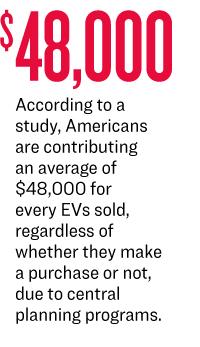
An average EV, with a current sticker price of about $53,000, would cost about $100,000, “if these subsidies were rolled into the retail price of the car instead of being socialized to the rest of us,” the report’s co-author Brent Bennett told The Epoch Times.
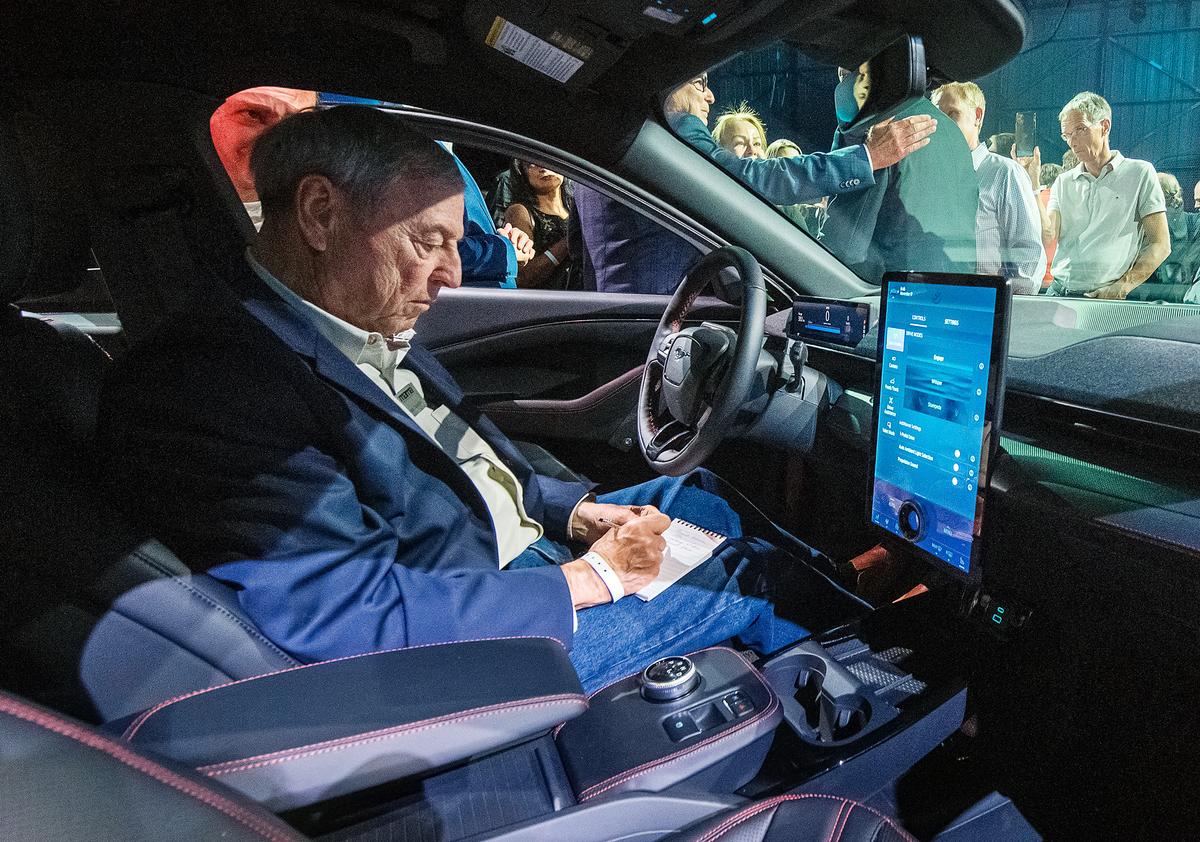 The interior of Ford's first mass-market all-electric car, the Mustang Mach-E, at a ceremony in Hawthorne, Calif., on Nov. 17, 2019. (MARK RALSTON/AFP via Getty Images)
The interior of Ford's first mass-market all-electric car, the Mustang Mach-E, at a ceremony in Hawthorne, Calif., on Nov. 17, 2019. (MARK RALSTON/AFP via Getty Images)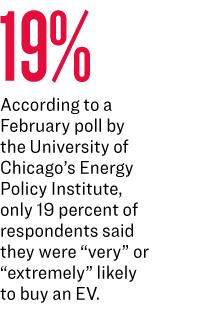
“It's about property values, it's about maintaining the character of their neighborhoods in their towns, in their counties,” Mr. Bryce told The Epoch Times. “And this is something that has been happening from Maine to Hawaii.
Europe Puts On the Brakes
Biden’s push for EVs and other net-zero mandates comes as many European governments, which are decades ahead of the United States in the transition, have been backpedalling.In September, British Prime Minister Rishi Sunak delayed a ban on gasoline-powered cars and gas boilers because these net zero climate goals imposed “unacceptable costs” on British families. Also in September, French President Emmanuel Macron dropped France’s ban on gas boilers because "we cannot leave our compatriots, particularly in the most rural areas, without a solution."
 France's President Emmanuel Macron speaks during the United Nations climate summit in Dubai on Dec. 1, 2023. (LUDOVIC MARIN/AFP via Getty Images)
France's President Emmanuel Macron speaks during the United Nations climate summit in Dubai on Dec. 1, 2023. (LUDOVIC MARIN/AFP via Getty Images)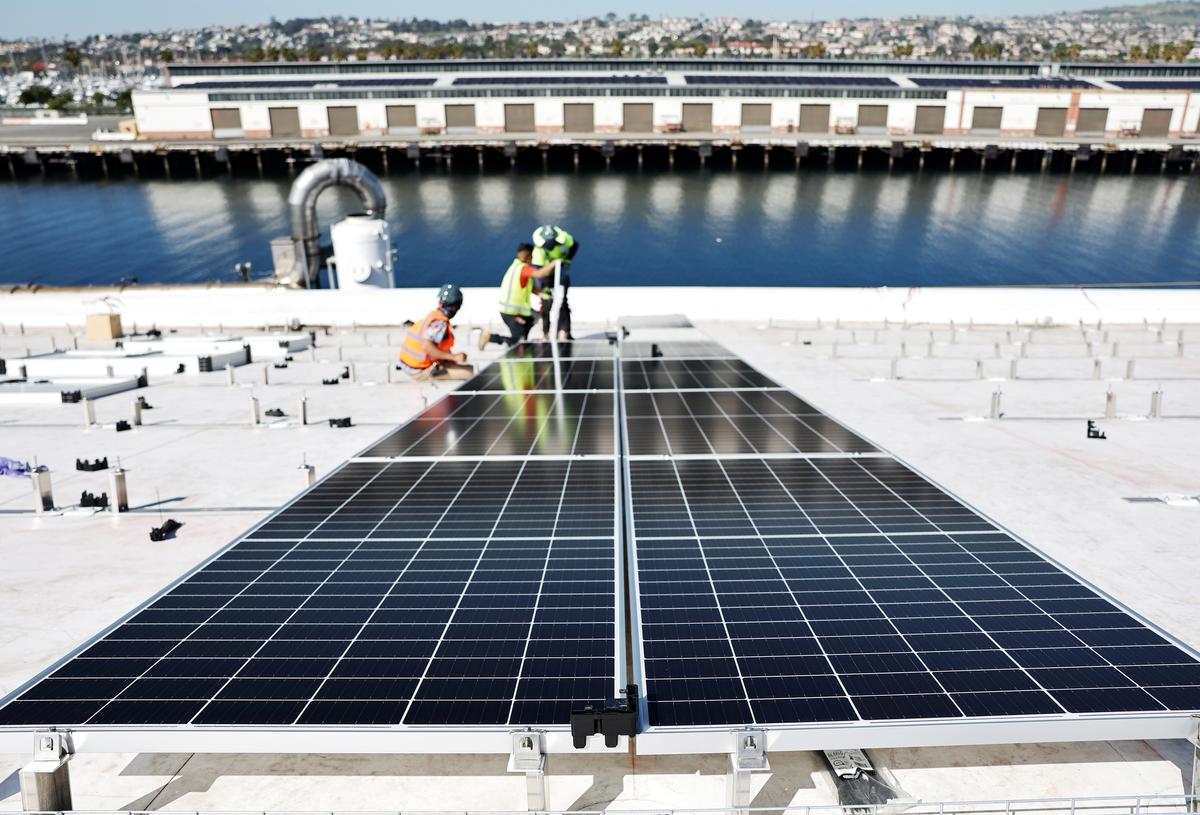 Workers install solar panels at a four-acre solar rooftop atop AltaSea's research and development facility at the Port of Los Angeles, in the San Pedro neighborhood of Los Angeles on April 21, 2023. (Mario Tama/Getty Images)
Workers install solar panels at a four-acre solar rooftop atop AltaSea's research and development facility at the Port of Los Angeles, in the San Pedro neighborhood of Los Angeles on April 21, 2023. (Mario Tama/Getty Images)Despite what Americans are being told to do, or paid to do, by government for its transition to net-zero, they appear to have minds of their own.
“Mr. President, no government agency, no think tank, and no polling firm knows more about the automobile customer than us,” the car dealers told the administration. “We talk to customers every day.”
“Mr. President, it is time to tap the brakes on the unrealistic government electric vehicle mandate,” the letter stated.
Views: 80
Comment
-
Comment by Thinklike A. Mountain on December 3, 2023 at 7:23pm
-
I was torn between buying the Tesla Virtue Signaler and the Rivian Hoopla. Then I woke up.
© 2025 Created by Webmaster.
Powered by
![]()
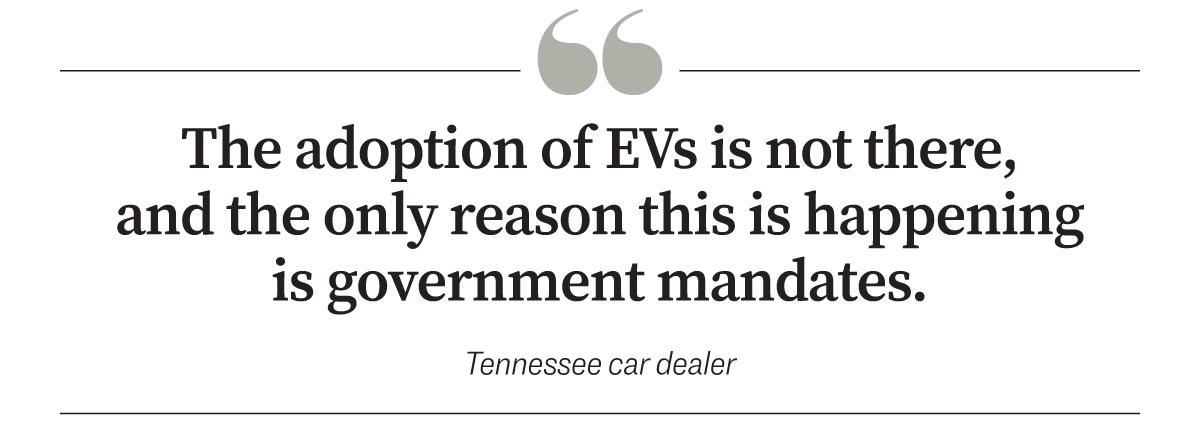

You need to be a member of Citizens' Task Force on Wind Power - Maine to add comments!
Join Citizens' Task Force on Wind Power - Maine